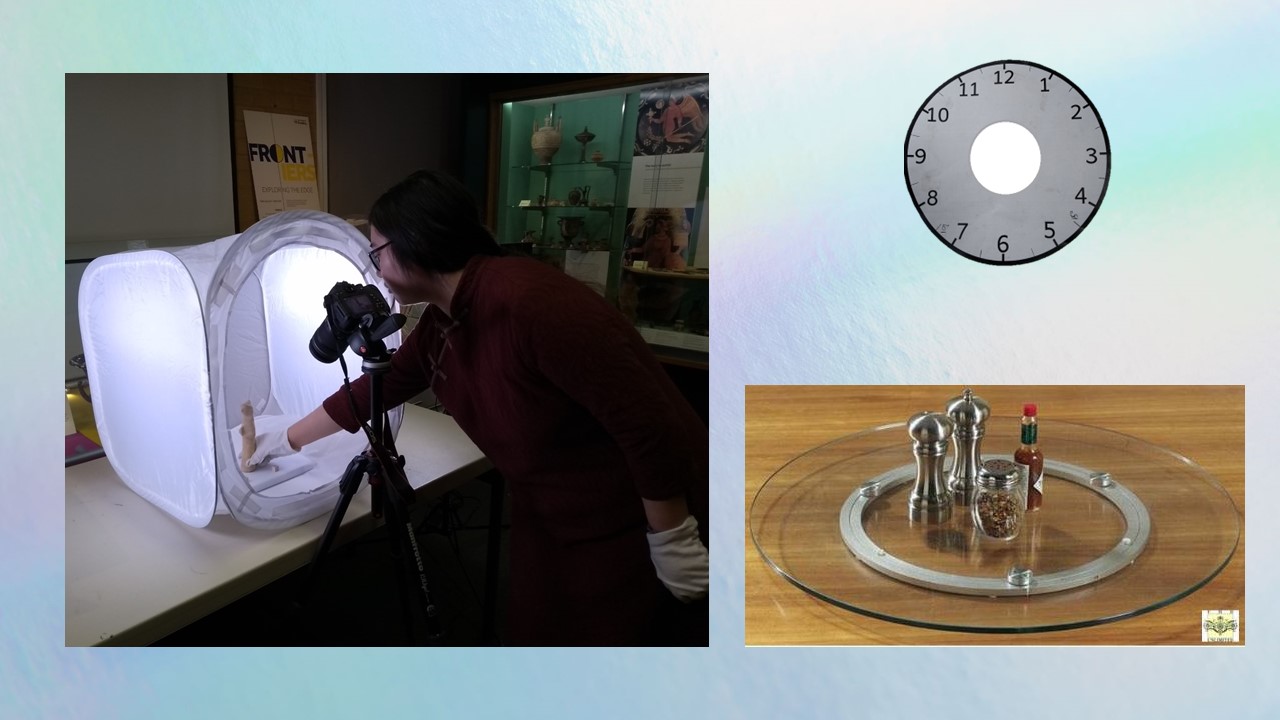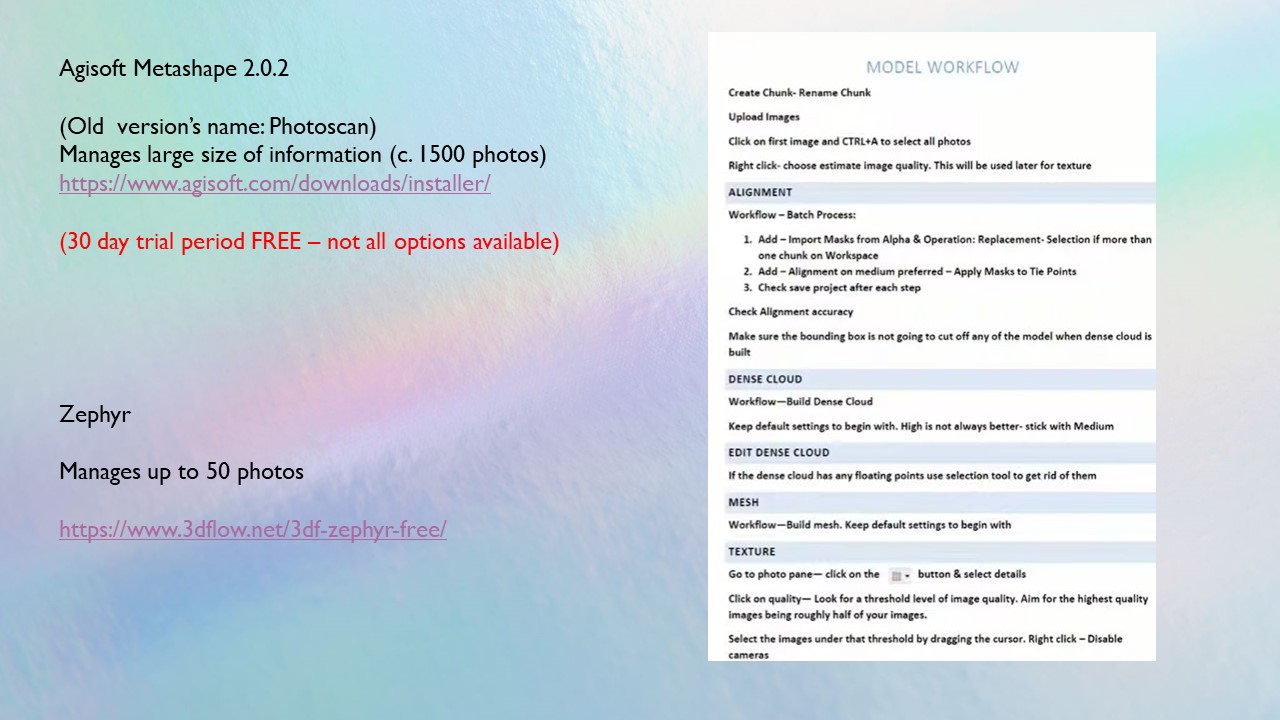Photogrammetry is another technique that – among other functions – allows the user to obtain a 3D model of an object. According to culturalheritageimaging.org, photogrammetry is fundamentally about measurement: the measuring of the imaging subject. To perform high-quality photogrammetric measurement, the photographer capturing the photogrammetry data set must follow a rule-based procedure. This procedure will guide users regarding how to configure, position, and orient the camera towards the imaging subject in a way that provides the most useful information to the processing software and minimizes the uncertainty in the resulting measurements. These measurements will be as good or as poor as the design of the measurement structure, or lack thereof, that underlies the collection of the photographic data.
Recent technological advances in digital cameras, computer processors, and computational techniques, such as sub-pixel image matching, make photogrammetry a portable and powerful technique. It yields extremely dense and precise 3D surface data with an appropriately limited number of photos, captured with standard digital photography equipment, in a relatively short period of time. In the last five years, the variety and power of photogrammetry and related processes have increased dramatically.
At the Ure museum we have been using this methodology for a while, especially for the project “Cyprus in 3D”. Again, our 3D models have been obtained thanks to the work of the museum staff, volunteers, Erasmus and UoR students. Firstly, the object selected should be stable on a flat surface. The use of a lightbox and a turntable will reduce the “noise” of the photographs and provide clearer pictures and more accurate overlapping. Secondly, photographs should be taken around the object (360 degrees) following an “umbrella” or “dome” pattern. A wide range of software are capable to process these images and build up a dense point cloud, which will ultimately provide a 3D model.
Starting with a self-standing, medium-sized object, with a non-reflective surface, should be less problematic to obtain a 3D model.
It is possible, however, to obtain 3D models of whole areas, and at the Ure we also experimented with this.
When producing 3D printed replicas from the 3D models obtained by using photogrammetry techniques, we noticed that some figurines were rendered with the display support that stabilise them, as their bases are not well preserved. By using Blender and Autodesk Meshmixer, we edited the original figurine and added a base and “cleaned” the concretions and the extra support on the back. Moreover, we created two different lyre players and aulos players.
The aulos player was quite a challenge, since the position of the arms of the original figurine do not match the gesture usually represented on this iconography. Figurines playing the aulos place their flexed arms over their chest, with their hands very close to each other to hold the pipes. Thus, we decided to photograph and create a 3D model of another figurine in our collection, one that would match these body expressions.
Using Autodesk Meshmixer, we “cut” the arms of these figurine and applied them to the one that we originally used to create the previous brand-new models of musicians. Now, we had the full orchestra.












